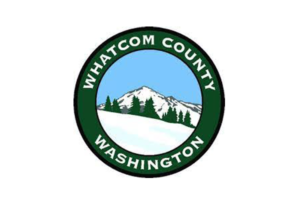Food has never been a bigger story than since the onslaught of the COVID-19 pandemic. The news has been heartbreaking and at the same time awe-inspiring to see the scale of response and sheer ingenuity in many corners of the food system. One good thing in the midst of this ongoing pandemic is that it has created space and urgency to make fast changes and forge new paths that are strengthening local food systems.
New Venture Advisors recognizes that our own clients, past and present, and food system coworkers are among the innovators and have a frontline view of these changes.This past spring, we sent out a survey to learn about what’s happening on the ground. A big ‘thank you’ to all who responded–we were encouraged by your stories and how this will continue to impact our work moving forward.
We want to highlight some of the common themes from more than 40 leaders across the nation with whom we spoke and who answered the survey. This analysis is by no means comprehensive, but already we are seeing these trends at play in our work at NVA.
Adapting Business to the New Normal
We asked how businesses have quickly pivoted their model to account for the loss of markets with schools and restaurants closing, even as the need for food became urgent and unemployment rates skyrocketed. Some of these initiatives started out of necessity, but they are also informing new models for many food businesses moving forward.
- Focus on Online Platforms–Most businesses have expanded online capacity in one form or another, which has supported contactless sales and enabled more farmers to sell directly to consumers and even reach new customers. One organization created a customizable online farmshare program with goods from both restaurants and farmers which is creating networking opportunities for farmers.
- Pivot Toward Value-Added Processing–Because a decrease in sales outlets was creating stockpiles of fresh produce that needed to be used quickly, several organizations have increased their capacity to do value-added processing. This includes creating more shelf-stable foods that could be added into CSA subscriptions and piloting farm-to-freezer programs to extend the availability of fresh produce.
- Re-Evaluating Services–Due to increases in direct-to-consumer sales (and the need to cut back on the number of people in a space), some businesses have determined which services are necessary to offset potential food shortages. For example, one cannery quickly shifted to only processing a small handful of staples that were in high demand in their community and forego the full selection of value-added products they typically produced. This then opened up space for them to process one cow a month that could be distributed to a local food bank where proteins were hard to access.
- Forging of New Partnerships–The list is long of the ways that businesses have forged new partnerships to ensure those at risk have access to healthy food, such as students who rely on free school lunches, those who have found themselves unemployed, vulnerable populations who are not able to leave their homes, and frontline workers. These efforts have included buying meals from local restaurants and buying local produce and fish to distribute directly and through food pantries (see this blog post for some inspiring stories).
Most Valuable Players
- Small Farmers and Food Hubs–With shortages in grocery stores and breakdowns in national food supply chains, many farmers have seen a dramatic rise in direct-to-consumer sales and a resurgence in CSA sales. We heard from several food hubs that quickly stepped in to provide new and expanded sales channels for farms through services such as processing and delivery. As a result, most of these food hubs are now seeking funds to support additional staff, space and equipment to increase capacity and operate more effectively in the future.
- The Rural (Independent) Grocery Stores–Grocery store operations in small towns have become a lifeline for people who can’t or don’t want to shop very far from home. One survey respondent shared how their small town grocery store offered curbside pick up that could be fulfilled much more quickly than the nearest box chain grocer. Unfortunately, small communities that had lost their local grocery prior to the pandemic felt this loss more profoundly.
Exposing the Gaps in the Local Food System
The stressors from the pandemic have also brought to the forefront gaps and inequities in our food systems that previously were easy to overlook.
- Reliance on Undiversified Business Models–On one hand, the pandemic has shattered the farm-to-table supply chain. One respondent mentioned how many small farmers were left scrambling when restaurants were shut down. At the same time, local grocery stores were looking for ways to increase their sales, but food pantries became a prime recipient of produce donations. While this kept food moving in the moment, as another respondent noted, most food pantries struggled with the increased utilization. Many lacked the infrastructure such as food transportation and cold storage, staff/volunteer resources, and revenue from new services to offset costs, including supplies needed to adhere to food safety protocols. These challenges highlight the need for coordinated distribution channels to ensure farmers have diversified sales options and goods are reaching local communities, especially those with highest need.
- Lack of Local Distribution–In the early days of the pandemic, the national supply chain had limitations in responding to consumer demand. Many respondents noted a need for decentralized food distribution. One respondent opined that a single cooperative statewide food distribution network would help families purchase proteins, vegetables, and value-added goods from their local grocery stores. The network would improve supply chain logistics, eliminate duplicate independent efforts, and mitigate a scarcity mentality that is prevalent among too many local food producers in regard to sales channels.
- Lack of Small-Scale Meat Processing–As one respondent stated, the national meat supply chain is concerning. Ranchers had a difficult time finding a processing date for their animals because larger supply chains were backed up and many more producers were relying on the smaller, local meat processors. They had limited capacity and some even increased their prices for processing. While we heard heroic stories of small processing facilities jumping in to process limited amounts of proteins for food banks, there remains a need for a sustainable solution. Many survey respondents mentioned a gap in small-scale processing capacity as well a shortage of cold storage facilities, which, if addressed, could improve the reliability of local meat supply chains.
- Holding Onto New Customers–While many were encouraged by the increase in local food sales, one key question kept coming up: How do businesses hold onto these new customers? One respondent lamented that their scramble to keep up meant a missed marketing opportunity to showcase and educate consumers about the importance of local foods to encourage ongoing sales. Regardless, there were other mentions for the need to coordinate local marketing campaigns.
- Uncertainties about the Future–With little progress in combating the pandemic at the moment, most survey respondents voiced concerns about the risks associated with the unknowns and the pending recession. There continues to be a need for technical and financial assistance for small businesses and initiatives to address economic inequality, already an issue pre-pandemic. There was also mention of a need for mental and emotional support for farmers who have been working harder with longer days not only to address market disruptions due to the virus, but in many cases facing extreme weather conditions as well.
With so much uncertainty about how these changes in the food system will play out in the immediate future, we are encouraged to see communities begin to address these issues through city-wide food plans and food policy councils, some identifying areas that need immediate attention and using CARES funding to address them. We will continue to share innovations and best practices as these changes unfold and we work with our clients to meet the moment.
(Image: Jason Whitman / Shutterstock)



